Carving
Updated: 2002/01/11
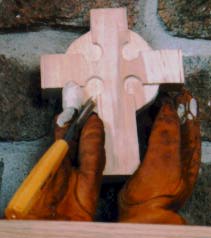
I had originally thought about calling this section "Faith", since
currently much of my current carving is an expression of my personal
faith. I'm a Christian (yes, there are still a few of us left), with the
religion that I observe and am most familiar with being Anglican. I
usually make a distinction between the religion one practises and their
personal faith. For some people there is no line and the two are integral,
but I'm not one of them. Frankly a person's particular religion (as
opposed to their faith) is irrelevant to me aside from what could be
considered a cultural heritage (like Mennonites). A friend of mine put it
into a unique perspective: "I don't care if they worship a doorknob. If
they're a better person because of it, then who am I to judge them?" No,
I'm not advocating worshipping doorknobs (nor were they).
As a side note here's a few Christian sites I've come across, although to be
honest I haven't really looked through them thoroughly. Some of them look a
little too "fire and brimstone" for my particular vision, but I'm sure there's
something useful in there:
Anyways, if I haven't scared you off here's some info and a few of the
carvings I've done (I guess this is a little bit of a brag page).
I began carving a long time ago and came upon the idea of creating Celtic
Crosses for my friends and relatives. Celtic spirituality is a unique
blend of some pagan ideals, mixed with Christian ideals, that were also
influenced by the Roman ideals at the time. There's quite a hemegony
there at any rate, but since my own pre-Canadian ethnic background is
Scotia/Irish the Celtic/Christian symbology seemed the most
appropriate.
What differentiates Celtic crosses from your standard crucifix is usually
a circle around the arms centered at their intersection. This represents
the oneness of God, something that is prevelant in Celtic culture. This
ideal is akin to the Greek thought that God is the alpha and omega, or the
beginning and the end. Another characteristic of Celtic crosses is the
knotwork that decorates them. More than simple ornamentation, a true
Celtic knot will again convey a sense of infinity of God. Although any
one design may incorporate several seperate knots, each one should be
continuous. If you start at one point you should be able to follow it
through and end where you began. The more complex designs use only one
knot to create an intricate pattern.
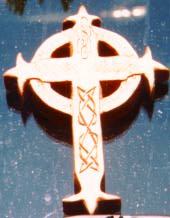
| June 1989, for James Neufeld. My first attempt at
carving. I used a combination of power jig saw and coping saw to make the
form. Designs are simple cuts into the wood.
|
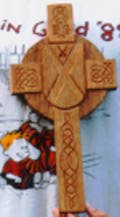
| August 1989, for Pete Dowd. Somewhat larger and
not as traditional. That's his family's coat-of-arms in the center.
|

| September 1989, for Juanita Wardell. "The
missing cross". This one was similar to James'. I gave this to her
before her departure to Caponwry Bible School but unfortunately didn't
snap a picture of it. (There is no image for this one, although I'm
reserving space just in case I find it eventually.)
|

| June 1990?, for Ken and Carolee Neufeld.
This was a present for their 25th wedding anniversay as I recall. My
first try at working in birch, oiweh is that stuff hard!
|
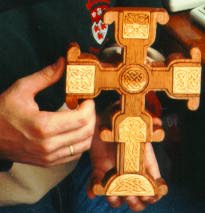
| December 1994, for Pasquale Greco. The final cross
in the first batch I was making for my friends. This was my first attempt
at making a "composite" cross, the body is mahogany while the inlays were
with birch.
|
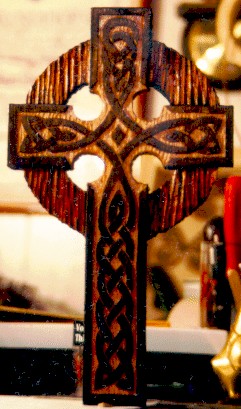
| November 1995, Wilma Mitchell (Grandma).
My first attempt at a mahogany cross with design over the whole body.
Previous ones didn't have much in the way of relief work.
|
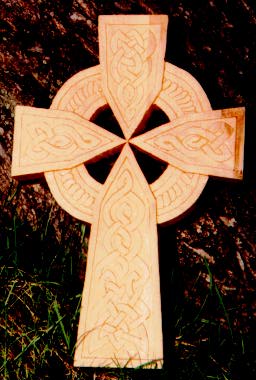
| May 1996, Wilma Christie (Nana/Granny
Grouch). The whole cross is birch and is huge (compared to previous
ones). This was due to a mix up in ordering the wood where a thickness of
one to three quarters of a inch was misheard as one and three
quarters of an inch. Although birch is a tougher wood than mahogany I was
pleased with the finer grain, allowing me smaller and cleaner designs.
|
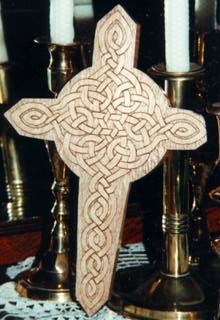
| October 1996, Adelaide Dodds (Godmother). This is the first
of my latest batch of wood (this time done up properly to my
specifications: birch, ~1" thick with an 8" X 12" blank to play with).
Looking for more originality I borrowed the center design from a card my
Mom had kicking around and added the arms in such a fashion as to make a
continuous loop. In other words if the design was made from string
you'd only need one piece.
|
 |
January 1997, Arlisa Hill. Arlisa's cross is more of a traditional
style, copied directly from a gravestone that I photographed in
Scotland. Staining was done in three stages, an initial
application of a clear stain on the knotwork, sides and back part
of the cross, a paint and wipe of shaded stains on the recessed surfaces
and a final clear stain over the whole cross. I have to admit I
impressed myself with the shading effects. |
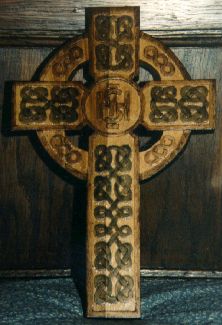 |
December 1997, Steve Vince. Steve's cross is like Arlisa's, very
traditional. One effect that I found by accident was the IHS was
originally at the same level as the rest of the relief work. However I
wasn't satisfied with the way it was done the first time, and so carved
out the section and redid it (it's tough to erase in wood). This
produced a layer that was offset from both the outer circle and the
arms. It's difficult to illustrate this in the photo, but it looks cool
up close. |
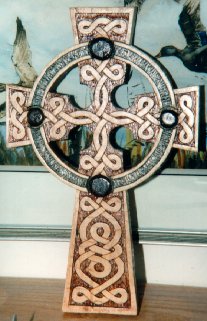 |
April 1998, Naomi Durksen. Again I was experimenting with multiple
layers and discovered the joy of a wood router in making this job much
easier. The actual shape of the cross is taken from a pendant my brother
has. |
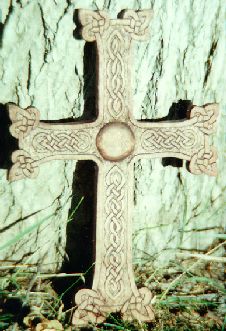 |
September 1998, James and Camile Neufeld. This started as a wedding
gift which turned into a Christmas gift. This is an Armenian cross, a
style that James introduced me to upon his return from visiting Israel and
the surrounding areas. Generally the crosses are much longer than they are
wider, with the horizontal arms placed more in the center of the vertical
arms, rather than a 1:2 top:bottom ratio. Another feature is the buds at
the ends of the arms, symbolizing the living cross. Coincidentally, many
of the designs found on the arms of Armenian crosses are very much in a
Celtic style. |
 |
August 1999, Butch and Eleanor Isaak. Another wedding gift, this is
perhaps one of the most original that I've done so far. The only part of
this that isn't thought up from my on mind is the knotwork in the lower
two inches. I borrowed the design from a book on Celtic knotwork and
integrated it with the rest of my knotwork. |
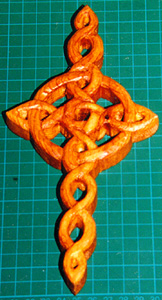 |
September 1999, Trevor Gebel. A new design and style with a new type
of wood: cedar. Cedar is like mahogany; very soft with a large grain.
Although this cross didn't require as much physical effort to carve like
birch does, it's very finicky about cut direction. |
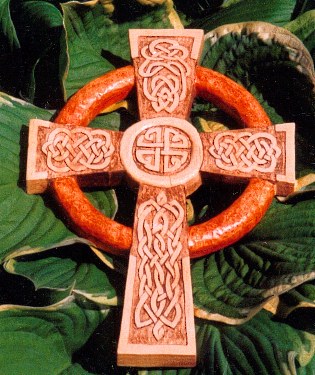 |
June 2001, Jackie Avent. |
I've also done a few other carvings:
| Although not a true carving I did put a lot of
time in with a magnifying glass. This was done in 1988, long before I'd
heard about wood burning kits.
| 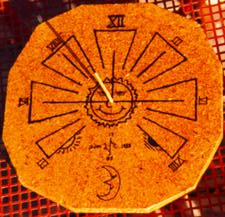
|
| A walking stick done for my Grandfather. One side depicts the sunset
on a castle on a loch in the Scottish Highlands, the other depicts the
sunrise in a small Japanese costal fishing town. I think the wood is
willow, although very soft the grain is huge and detail is simple.
| 
|
| A going away present for a girl I had a crush on wayyy back when. I'm
kind of proud of how this fit together, although I had a lot of problems
keeping the two halves together. It isn't much larger than one of the old
silver dollars. I wonder if she still has it?
| 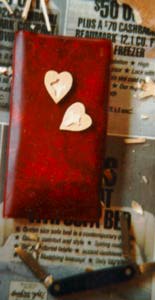
|

 Return to my homepage.
Return to my homepage.




















